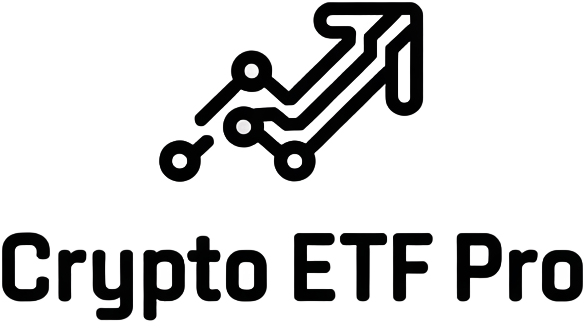
On-chain ETF settlement is no longer a theoretical possibility, it’s a living, breathing reality. In October 2025, the U. S. Securities and Exchange Commission (SEC) greenlit in-kind creation and redemption for all spot Bitcoin and Ethereum ETFs. This move, long anticipated by market insiders, has begun to rewire the very infrastructure of Bitcoin itself. The most visible pioneer in this new era? Bitwise Asset Management, whose in-kind redemption mechanism is now setting the standard for crypto ETF efficiency and transparency.
Bitwise’s In-Kind Redemption: What Changed?
For years, cash creations and redemptions were the norm for crypto ETFs. That meant when an institutional investor wanted to create or redeem ETF shares, they had to do so using U. S. dollars, even though the underlying asset was digital currency. This process introduced friction: trading spreads, conversion fees, time delays, and extra counterparty risk as brokers moved between fiat and crypto rails.
The SEC’s recent approval flips the script. Now, authorized participants can deliver Bitcoin directly to Bitwise’s ETF, or redeem ETF shares for actual Bitcoin at prevailing net asset value, no more forced conversions into cash. This is known as in-kind settlement. It’s a subtle but profound shift that brings crypto ETFs in line with traditional commodity funds like gold or oil ETFs, which have long used in-kind processes to maximize efficiency.
Why On-Chain Settlement Matters for Bitcoin Infrastructure
This isn’t just an operational tweak, it’s a macro-level transformation for how Bitcoin interacts with legacy markets. With in-kind redemptions:
- Efficiency soars: Market makers can arbitrage price discrepancies between spot markets and ETF shares without costly conversions.
- Costs drop: Trading costs are now measured in basis points, mere fractions of a percent, rather than full percentage points lost to bid-ask spreads and wire fees.
- Transparency rises: Settlement happens on-chain. Investors can verify flows of Bitcoin into and out of ETF trusts via blockchain explorers.
The result? The invisible plumbing of the Bitcoin market becomes both more robust and more auditable, a critical step as institutional capital deepens its roots in digital assets.
The Numbers Behind the Shift: Real-Time Market Impact
The timing couldn’t be more significant: as of this writing, Bitcoin trades at $110,676.00, holding firm above six figures despite recent volatility (24-hour range: $109,549.00 – $113,608.00). With these high stakes, every basis point saved through on-chain ETF settlement translates into millions of dollars reclaimed by sophisticated traders, and ultimately by retail investors who benefit from tighter spreads and lower fund expenses.
Bitcoin (BTC) Price Prediction Table: Post In-Kind ETF Settlement (2026–2031)
Projections reflect the impact of SEC-approved in-kind ETF redemptions and evolving institutional adoption.
| Year | Minimum Price | Average Price | Maximum Price | Year-over-Year Change (Avg) | Market Scenario Insight |
|---|---|---|---|---|---|
| 2026 | $93,000 | $125,000 | $155,000 | +13% | Post-ETF in-kind settlement, volatility as institutional flows stabilize. Possible correction after 2025 run-up. |
| 2027 | $105,000 | $144,000 | $180,000 | +15% | Steady adoption by pension funds and asset managers. ETF volumes increase, narrowing spreads. |
| 2028 | $119,000 | $167,000 | $210,000 | +16% | Global ETF adoption expands. Tax efficiency and cost savings drive further institutional entry. |
| 2029 | $138,000 | $194,000 | $250,000 | +16% | Bitcoin halving event boosts scarcity narrative; regulatory clarity in major markets supports price. |
| 2030 | $160,000 | $225,000 | $295,000 | +16% | Mainstream integration in financial products. Technical improvements (e.g., scalability) enhance utility. |
| 2031 | $185,000 | $260,000 | $340,000 | +16% | Peak institutional adoption; competition from other digital assets tempers upside, but Bitcoin remains dominant store-of-value. |
Price Prediction Summary
Bitcoin’s price outlook from 2026 through 2031 is bullish overall, driven by the efficiency and institutional appeal of in-kind ETF redemptions. Prices are projected to grow steadily, with average annual increases of 13–16%. While volatility and corrections are expected, especially after major rallies, the integration of Bitcoin into mainstream financial infrastructure and expanding global ETF adoption underpin long-term growth.
Key Factors Affecting Bitcoin Price
- SEC approval of in-kind ETF redemptions increases efficiency and institutional participation.
- Broader adoption of crypto ETFs by pension funds, sovereign wealth funds, and asset managers.
- Regulatory clarity in the US and other major economies supports mainstream adoption.
- Bitcoin halving event in 2028 reduces new supply, reinforcing scarcity narrative.
- Potential competition from alternative digital assets and evolving blockchain technologies.
- Macroeconomic factors such as inflation, interest rates, and global capital flows.
- Continued improvements in Bitcoin’s scalability, security, and integration with financial infrastructure.
Disclaimer: Cryptocurrency price predictions are speculative and based on current market analysis.
Actual prices may vary significantly due to market volatility, regulatory changes, and other factors.
Always do your own research before making investment decisions.
This structural upgrade is not just about cost savings; it’s about redefining what it means to own exposure to Bitcoin through regulated vehicles. By reducing operational drag and aligning incentives across market makers, custodians, and end investors, Bitwise’s approach could catalyze further innovation across on-chain ETF products, and potentially set off a virtuous cycle of adoption throughout the sector.
If you’re interested in digging deeper into how these mechanics work or what they mean for your portfolio construction strategy, check out our extended coverage on on-chain ETF redemptions transforming Bitcoin settlement.
It’s important to recognize that what’s unfolding is more than a technical upgrade, it’s a shift in the power dynamic between traditional financial intermediaries and the native architecture of digital assets. On-chain ETF settlement means that, for the first time, flows into and out of regulated ETFs are visible on the Bitcoin blockchain itself. This transparency not only demystifies ETF flows but also empowers analysts, investors, and even regulators with real-time data previously locked behind institutional curtains.

Historically, critics have argued that cash-based settlement in crypto ETFs created hidden costs and diluted some of Bitcoin’s core values, openness, auditability, and resistance to censorship. Now, with Bitwise executing the first in-kind creations and redemptions on-chain, those concerns are addressed head-on. The ETF is no longer a black box. Instead, every creation or redemption event leaves an indelible mark on-chain, open for anyone to inspect.
Broader Implications: Institutional Flows and Crypto ETF Innovation
The approval of in-kind settlement is already influencing market behavior. As trading desks adjust their models to take advantage of lower friction, we’re seeing increased liquidity around key price levels, especially as Bitcoin hovers at $110,676.00. For institutional allocators who once hesitated due to operational complexity or cost opacity, the path into (and out of) crypto exposure is now clearer than ever before.
This isn’t just about Bitcoin. The SEC’s green light has opened doors for similar mechanisms across Ethereum ETFs and potentially future products tracking other digital assets like Chainlink (LINK). Each successful implementation further legitimizes the ecosystem and pressures competitors to adopt equally efficient structures. The race is now on for issuers to deliver best-in-class on-chain ETF products, raising the bar for transparency, security, and investor alignment industry-wide.
For individual investors and advisors managing diversified portfolios, this development also means more reliable pricing and lower tracking error relative to spot markets. It narrows the gap between “owning Bitcoin” outright and accessing it via regulated wrappers, a critical step toward mainstream adoption.
What Comes Next? Macro Trends to Watch
The integration of in-kind redemptions into mainstream ETFs signals a new phase in crypto’s maturation. Expect several macro trends in its wake:
- Greater institutional participation: As operational risks fall away, pensions, endowments, and sovereign funds may find spot crypto ETFs newly palatable.
- Pressure on legacy custodians: With fewer conversion steps needed between cash and crypto rails, traditional banks must adapt or risk disintermediation by leaner digital-native custodians.
- Acceleration of on-chain analytics: Open-settlement flows will supercharge research into ETF-driven price impacts, potentially revealing new market cycles tied directly to creation/redemption activity.
This evolution doesn’t erase all challenges, regulatory clarity remains a moving target globally, but it does lay down infrastructure capable of supporting much larger capital inflows as digital assets move from fringe allocation toward core portfolio status.
If you want a deeper dive into how these innovations are reshaping investor outcomes, and why Bitwise’s approach could become industry standard, see our detailed breakdown at how in-kind redemptions are transforming Bitcoin ETFs.









